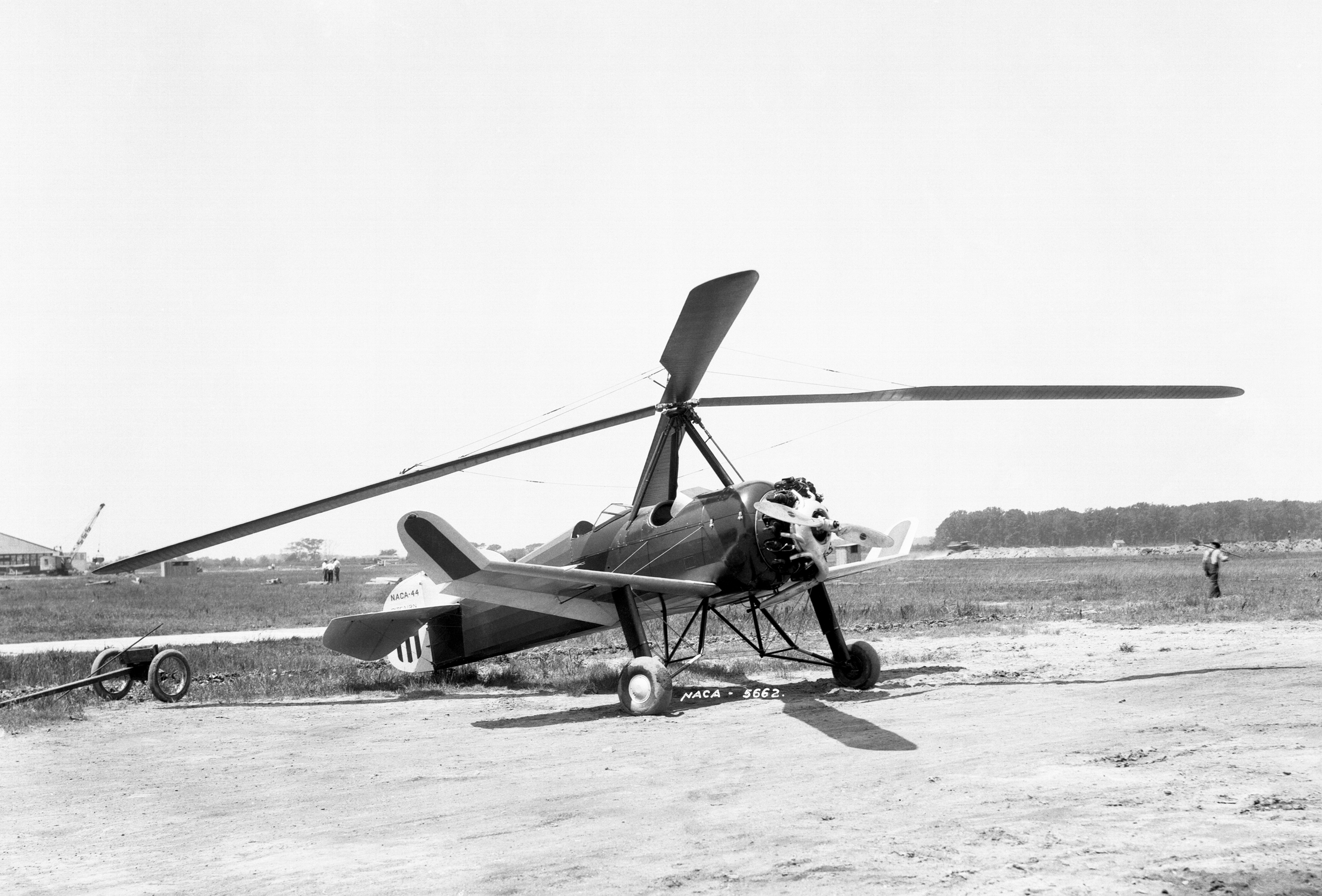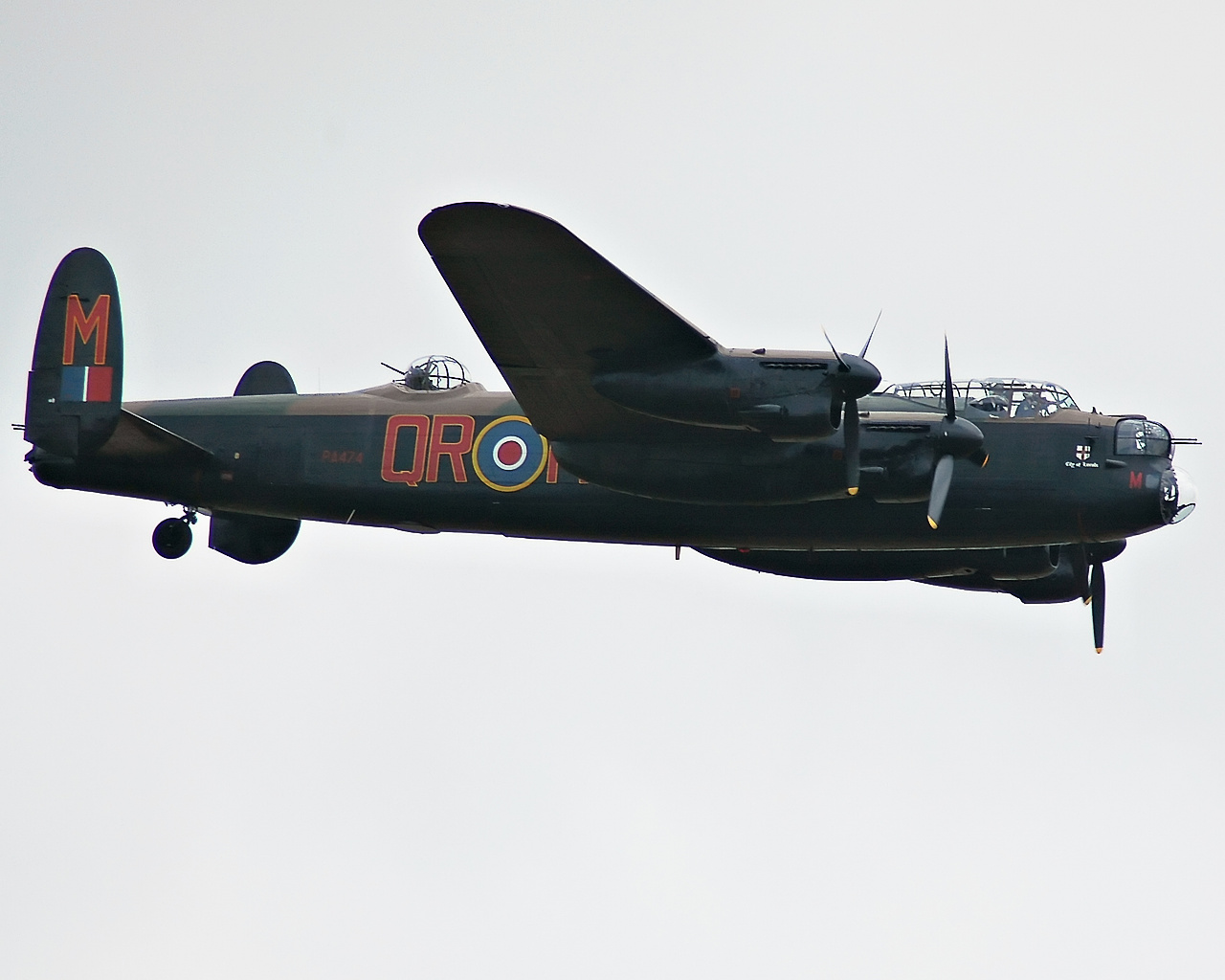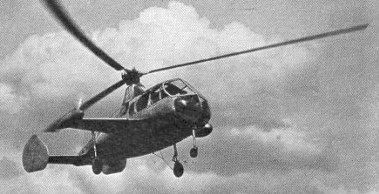|
Cierva
The Cierva Autogiro Company was a British firm established in 1926 to develop the autogyro. The company was set up to further the designs of Juan de la Cierva, a Spanish engineer and pilot, with the financial backing of James George Weir, a Scottish industrialist and aviator. History Juan de la Cierva's first British-built autogyro was the C.8 design. It and some other designs were built in conjunction with Avro. The pre-war Cierva C.30 proved popular. Nearly 150 were built under licence in the United Kingdom by Avro, in Germany by Focke-Wulf, and in France by Lioré-et-Olivier. On 9 December 1936, Cierva was killed in the Croydon KLM airliner accident when the aircraft in which he was a passenger crashed after taking off in fog. Dr. James Allan Jamieson Bennett was promoted to Chief Technical Officer of the company and remained in the position until leaving in 1939. In addition to making important contributions to autogyro controls while at Cierva Autogyro, Bennett carried th ... [...More Info...] [...Related Items...] OR: [Wikipedia] [Google] [Baidu] |
Juan De La Cierva
Juan de la Cierva y Codorníu, 1st Count of la Cierva (; 21 September 1895 – 9 December 1936), was a Spanish civil engineer, pilot and a self-taught aeronautical engineer. His most famous accomplishment was the invention in 1920 of a rotorcraft called ''Autogiro'',''Aero Digest'', Feb 1939, p. 27 a single-rotor type of aircraft that came to be called autogyro in the English language. In 1923, after four years of experimentation, De la Cierva developed the articulated rotor, which resulted in the world's first successful flight of a stable rotary-wing aircraft, with his C.4 prototype. Early life Juan de la Cierva was born to a wealthy, aristocratic Spanish family, and for a time his father was the war minister. At the age of eight he was spending his pocket money with his friends on experiments with gliders in one of his father's work sheds. In their teens they constructed an aeroplane from the wreckage they had bought from a French aviator who had crashed the plane. The fina ... [...More Info...] [...Related Items...] OR: [Wikipedia] [Google] [Baidu] |
Cierva W
The Cierva Autogiro Company was a British firm established in 1926 to develop the autogyro. The company was set up to further the designs of Juan de la Cierva, a Spanish engineer and pilot, with the financial backing of James George Weir, a Scottish industrialist and aviator. History Juan de la Cierva's first British-built autogyro was the Cierva C.8, C.8 design. It and some other designs were built in conjunction with Avro. The pre-war Cierva C.30 proved popular. Nearly 150 were built under licence in the United Kingdom by Avro, in Germany by Focke-Wulf, and in France by Lioré-et-Olivier. On 9 December 1936, Cierva was killed in the 1936 KLM Croydon accident, Croydon KLM airliner accident when the aircraft in which he was a passenger crashed after taking off in fog. Dr. James Allan Jamieson Bennett was promoted to Chief Technical Officer of the company and remained in the position until leaving in 1939. In addition to making important contributions to autogyro controls while at ... [...More Info...] [...Related Items...] OR: [Wikipedia] [Google] [Baidu] |
Autogyro
An autogyro (from Greek and , "self-turning"), gyroscope, gyrocopter or gyroplane, is a class of rotorcraft that uses an unpowered rotor in free autorotation to develop lift. A gyroplane "means a rotorcraft whose rotors are not engine-driven, except for initial starting, but are made to rotate by action of the air when the rotorcraft is moving; and whose means of propulsion, consisting usually of conventional propellers, is independent of the rotor system." While similar to a helicopter rotor in appearance, the autogyro's unpowered rotor disc must have air flowing upward across it to make it rotate. Forward thrust is provided independently, by an engine-driven propeller. It was originally named the ''autogiro'' by its Spanish inventor and engineer, Juan de la Cierva, in his attempt to create an aircraft that could fly safely at low speeds. He first flew one on January 1923, at Cuatro Vientos Airport in Madrid. The aircraft resembled the fixed-wing aircraft of the d ... [...More Info...] [...Related Items...] OR: [Wikipedia] [Google] [Baidu] |
Cierva Air Horse
The Cierva W.11 Air Horse was a helicopter developed by the Cierva Autogiro Company in the United Kingdom during the mid-1940s. The largest helicopter in the world at the time of its debut, the Air Horse was unusual for using three rotors mounted on outriggers, and driven by a single engine mounted inside the fuselage. Only two aircraft were built, further development by Cierva was stopped after the crash of the first one and little work was done under Saunders Roe before the project was ended and the second aircraft was scrapped in 1951. Development The W.11 "Air Horse" heavy lift helicopter was developed by the G & J Weir, Ltd., Aircraft Department, reconstituted in 1943 as the Cierva Autogiro Company. The "W" in the designation is a continuation of the autogiro and helicopter series developed by G & J Weir, Ltd., during the period 1932–1940. The W.11 was a development of the Weir W.6 dual transverse rotor helicopter. It is the only helicopter of its type ever built and ... [...More Info...] [...Related Items...] OR: [Wikipedia] [Google] [Baidu] |
Henry Alan Marsh
Henry Alan Marsh AFC AFRAeS (29 January 1901 – 13 June 1950) was a British rotorcraft instructor and test pilot. Early life Alan Marsh was born in Stratton, Dorset. In 1917, he completed his education at Weymouth Secondary School, and started an engineering apprenticeship in Dorchester, Dorset. RAF service 1918–1930 In 1918, he joined the RAF as a 3rd Air Mechanic, and was posted to the first aircraft apprenticeship course at Halton. After being promoted to corporal, he joined the second course of NCO pilots at No. 2 FTS, Duxford. In November 1923, he passed out as a Sergeant Pilot with special distinction, and was posted to No. 41 Squadron. In 1924, he joined No. 1 Squadron, flying Sopwith Snipes in Iraq. In 1926, he was posted to No. 111 Squadron, flying Armstrong-Whitworth Siskins. In 1927 and 1928, he represented No. 111 Squadron in RAF flying displays. In September 1928, he joined an instructors' course at the Central Flying School (CFS) at RAF Wittering. He pass ... [...More Info...] [...Related Items...] OR: [Wikipedia] [Google] [Baidu] |
Avro Type 641 Commodore
Avro (an initialism of the founder's name) was a British aircraft manufacturer. Its designs include the Avro 504, used as a trainer in the First World War, the Avro Lancaster, one of the pre-eminent bombers of the Second World War, and the delta wing Avro Vulcan, a stalwart of the Cold War. Avro was founded in 1910 by Alliott Verdon Roe at the Brownsfield Mill on Great Ancoats Street in Manchester. The company remained based primarily in Lancashire throughout its 53 years of existence, with key development and manufacturing sites in Alexandra Park, Chadderton, Trafford Park, and Woodford, Greater Manchester. The company was merged into Hawker Siddeley Aviation in 1963, although the Avro name has been used for some aircraft since then. History Early history One of the world's first aircraft builders, A.V. Roe and Company was established on 1 January 1910 at Brownsfield Mill, Great Ancoats Street, Manchester, by Alliott Verdon Roe and his brother Humphrey Verdon Roe. Hump ... [...More Info...] [...Related Items...] OR: [Wikipedia] [Google] [Baidu] |
Avro
Avro (an initialism of the founder's name) was a British aircraft manufacturer. Its designs include the Avro 504, used as a trainer in the First World War, the Avro Lancaster, one of the pre-eminent bombers of the Second World War, and the delta wing Avro Vulcan, a stalwart of the Cold War. Avro was founded in 1910 by Alliott Verdon Roe at the Brownsfield Mill on Great Ancoats Street in Manchester. The company remained based primarily in Lancashire throughout its 53 years of existence, with key development and manufacturing sites in Alexandra Park, Chadderton, Trafford Park, and Woodford, Greater Manchester. The company was merged into Hawker Siddeley Aviation in 1963, although the Avro name has been used for some aircraft since then. History Early history One of the world's first aircraft builders, A.V. Roe and Company was established on 1 January 1910 at Brownsfield Mill, Great Ancoats Street, Manchester, by Alliott Verdon Roe and his brother Humphrey Verdon Roe ... [...More Info...] [...Related Items...] OR: [Wikipedia] [Google] [Baidu] |
Fairey FB-1 Gyrodyne
The Fairey FB-1 Gyrodyne is an experimental British rotorcraft that used single lifting rotor and a tractor propeller mounted on the tip of the starboard stub wing to provide both propulsion and anti-torque reaction. Design and development In April 1946, Fairey announced a private-venture project for a rotary-wing aircraft, to be built to a design developed by Dr. J.A.J. Bennett while he was chief technical officer at the Cierva Autogiro Company in 1936–1939. The Gyrodyne, constituting a third distinct type of rotorcraft and designated C.41 by the Cierva Autogiro Company, was in 1938 successfully tendered to the Royal Navy in response to Specification S.22/38 for a naval helicopter. Though preliminary work started on the project, it was abandoned with the outbreak of the Second World War, and G & J Weir, Ltd., the financiers of the Cierva Autogiro Company, declined to undertake further development in addition to their successful experiments with the W.5 and W.6 latera ... [...More Info...] [...Related Items...] OR: [Wikipedia] [Google] [Baidu] |
Gyrodyne
A gyrodyne is a type of VTOL aircraft with a helicopter rotor-like system that needs to be driven by its engine only for takeoff and landing, and includes one or more conventional propeller or jet engines to provide thrust during cruising flight. During forward flight the rotor is unpowered and free-spinning, like an autogyro (but unlike a compound helicopter), and lift is provided by a combination of the rotor and conventional wings. The gyrodyne is one of a number of similar concepts which attempt to combine helicopter-like low-speed performance with conventional fixed-wing high-speeds, including tiltrotors and tiltwings. In response to a Royal Navy request for a helicopter, Dr. James Allan Jamieson Bennett designed the gyrodyne whilst serving as the chief engineer of the Cierva Autogiro Company. The gyrodyne was envisioned as an intermediate type of rotorcraft, its rotor operating parallel to the flightpath to minimize axial flow with one or more propellers providing ... [...More Info...] [...Related Items...] OR: [Wikipedia] [Google] [Baidu] |
James George Weir
Air Commodore James George Weir, (23 May 1887 – 7 November 1973) was an early Scottish aviator and airman. He was a successful industrialist who financed Juan de la Cierva's development of the autogiro. Biography Weir was born in Cambuslang, Lanarkshire, Scotland in 1887 the son of James Weir of G. & J. Weir Ltd. and younger brother of William Douglas Weir. Both were involved in the family engineering firm. Weir was commissioned on 24 February 1906 as an officer in the 3rd (Renfrewshire) Volunteer Battalion, Princess Louise's (Argyll and Sutherland Highlanders). On 1 April 1908 he transferred to the 3rd Highland (Howitzer) Brigade, Royal Field Artillery. On 27 June 1911 Weir was found guilty of striking and knocking down on 13 April 1911 a former fiancé of his sister after he had broken off their engagement. Weir was awarded the 24th Royal Aero Club aviators certificate after flying a Bleriot Monoplane at Hendon on 8 November 1910. In 1914 he was transferred to the Royal ... [...More Info...] [...Related Items...] OR: [Wikipedia] [Google] [Baidu] |
Focke-Wulf
Focke-Wulf Flugzeugbau AG () was a German manufacturer of civil and military aircraft before and during World War II. Many of the company's successful fighter aircraft designs were slight modifications of the Focke-Wulf Fw 190. It is one of the predecessor companies of today's Airbus. History The company was founded in Bremen on 24 October 1923 as Bremer Flugzeugbau AG by Prof. Henrich Focke, Georg Wulf and Dr. rer. pol. Werner Naumann. Almost immediately, they renamed the company Focke-Wulf Flugzeugbau AG (later Focke-Wulf Flugzeugbau GmbH). Focke-Wulf merged, under government pressure, with Albatros Flugzeugwerke of Berlin in 1931. The Albatros Flugzeugwerke engineer and test pilot Kurt Tank became head of the technical department and started work on the Fw 44 ''Stieglitz'' (Goldfinch). Dr Ludwig Roselius became chairman in 1925 and handed over to his brother Friedrich in early 1933. In 1938 Roselius' HAG combine increased its shareholding to 46% and C. Lorenz AG secur ... [...More Info...] [...Related Items...] OR: [Wikipedia] [Google] [Baidu] |





